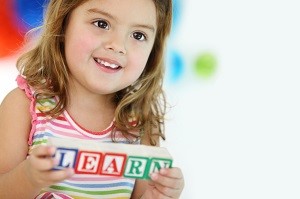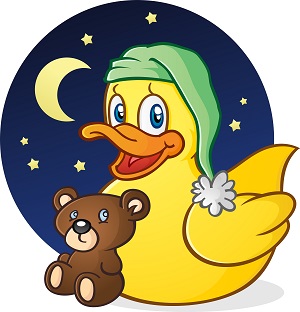What my two-year-old has taught me about language learning – Part 3

What my two-year-old has taught me about language learning – Part 1
What my two-year-old has taught me about language learning – Part 2
What my two-year-old has taught me about language learning – Part 4
What my two-year-old has taught me about language learning – Part 5
As my toddler moves firmly into the realm of sentences, leaving one/two-word utterances behind, I observe with great interest at how she experiments with language, and marvel at some of the language she independently produces. I’m sure the fact that I’m just another proud and enthused mother has a huge part to play in my interest, but as some of my friends have kindly pointed out, me being a language trainer and a bit of a nerd has perhaps pushed me to notice things that might otherwise have gone unnoticed.
In Part 1 and Part 2 of this series, I have mentioned that there are significant differences between fist and second language acquisition (FLA vs SLA), but I believe these observations of my toddler’s language acquisition process could inform our role as English teachers, albeit in an EFL context.
So here are a few more things that my two-year-old has taught me about language learning.

9. Tangible words are easier to learn than abstract ones. So how can we make abstract words stick?
While nouns like ‘dog’, ‘cow’, ‘milk’ and ‘mummy’ are easier to learn because there are real objects or pictures to act as a referent, more abstract parts of speech like adverbs can be trickier. So imagine how impressed I was when my daughter started using adverbs not only in the right part of the sentence, but also in the right context. Here is the order in which she learnt the different types of adverbs:
Adverbs of place - It’s over there; Let’s go outside.
Adverbs of manner - Sing it quickly; Go slowly; Do gently!
Adverbs of degree - It’s very very hot; I love you very much; I want just a little bit.
Adverbs of time - Do it tomorrow; I want read it now; See you soon!
She hasn’t quite tried using adverbs of frequency or comment adverbials yet.
It’s no surprise that adverbs of place are the first learnt, as they can easily be made tangible, either through pictorial or real-life demonstrations or experiential learning.
Some of the adverbs (particularly the adverbs of degree) are used because she’s clearly learnt the whole expression as a chunk through imitating the grown-ups e.g It’s over there; It’s very very hot; I love you very much; just a little bit.
Adverbs of manner are most likely learnt experientially, sometimes through song, rhyme or physical activities like dance.
Also products of experiential learning are adverbs of time.
However, at 2, the concept of time isn’t quite established and it will take a lot more meaningful personal experiences with time before she is able to have a sense of what a minute or an hour is. Without a clear sense of time, she evidently is not able to process ideas of frequency.
At this age, she is also unable to give complex opinions beyond ‘I like this. I don’t like that.’ As such, comment adverbials can only serve their purpose in time to come.
So how can we make abstract words stick?
- Make them as tangible as possible. Use pictures, real-life demonstrations, song, rhyme, dance, etc. TPR (Total Physical Response) springs to mind.
- Teach them in chunks. Use them in collocations and phrases that they normally occur in.
- Offer opportunities for experiential learning. Task-Based Learning and Teaching can create a conducive environment for such learning to take place.

10. A bit of humour can go a long way in helping vocabulary acquisition.
My daughter and I were having some slices of pear for dessert one evening, and the pear slipped from her hand onto the floor. I said to her, “Be careful. The pear is very slippy.”
At this point, my daughter started sniggering. She said to herself, “The pear is sleepy.”
“Not sleepy. Slippy.” I corrected.
“Sleepy! Sleepy! The pear is sleepy! Go to sleep!” she replied, and burst out laughing. I couldn’t help but join her in fits of laughter. She’s got her first play on words.
Some time later, she was having a bath and her toy duck slipped out of her hands into the water. She was quick to observe, “Duck sleepy!” and started laughing again.

11. Context is everything.
A friend of mine recently told me of how she unwittingly exclaimed, “Oh My God!” in front of her 1.5 year old. A day later, her child, in a completely different but appropriate context, repeated the exclamation, to her mother’s embarrassment.
Most parents of little children will have a similar story to tell you. After all, children are extremely sensitive to contexts and are able to draw similarities between recurring contexts.
As early as 1932, schema theorists like psychologist Federic Bartlett would explain that knowledge and information is stored in mental schemata, a mental framework of the world and the reality around the individual. People are more likely to pay attention and absorb information that fits into a pre-existing schema. A lot has been written since 1932 about schema theory, and in particular, the use of schema theory in learning to read in a second language e.g. Adams and Collins (1979).
As language teachers, presenting language (be it lexis or grammar) in context, preferably a familiar context, can activate the learners’ schemata and provide a place for the learner to store this new information/knowledge, allowing for easier retrieval as well as a more appropriate usage of language.

12. It’s not all about imitation. Creative experimentation is also key.
When the clocks went back by an hour in October, the sun would set earlier and our walks home from nursery were now taken in darkness.
One day, as we walked home, I pointed out the moon out to my daughter. She looked at it in wonder for she had seen many moons in her story books, but probably has never been up and about when the moon was high in the sky.
She then turned to me and said, ‘Mummy, find more moons!’
Undoubtedly, no one has used the plural of ‘moon’ with my daughter before, and so she hasn’t simply imitated a chunk of language she’s heard somewhere else.
She has deduced that plurals are usually created with the addition of the ‘s’ and has inventively created the plural of ‘moon’ in constructing her unique imperative ‘find more moons’.
My daughter has beautifully demonstrated what Noam Chomsky called The Creative Aspect of Language Use, the ability to create sentences that are new, not bounded by the environment but yet appropriate to the situation.
In the opening section of ‘Current Issues in Linguistic Theory', Chomsky (1964) writes…
“The central fact to which any significant linguistic theory must address itself is this: a mature speaker can produce a new sentence of his language on the appropriate occasion, and other speakers can understand it immediately, though it is equally new to them. Most of our linguistic experience, both as speakers and hearers, is with new sentences; once we have mastered a language, the class of sentences with which we can operate fluently and without difficulty or hesitation is so vast that for all practical purposes…” (pp. 50-118.)

So, before we rush in to correct our learners, could we perhaps pause for a moment to consider this:
Is that really a mistake? Or is my learner being creative with their use of language?
Does their use of language hinder the purposes of their communication? Or is what they are saying understood without an issue?
We do need to be careful…as someone once said, “If they are native speakers, they are being creative with language. If they are non-native speakers, then they’ve made a mistake.”
Do we recognise creatively when confronted by it?

Bibliography
Adams, M.J. and Collins, A.M. (1979). "A schema-theoretic view of reading" in Fredolle, R.O. (ed.) Discourse Processing. Multidisciplinary Perspectives. Norwood N. J. Ablex.
Bartlett, F.C. (1932) Remembering: A Study in Experimental and Social Psychology. Cambridge, England: Cambridge University Press.
Chomsky, N. (1964) in “Current Issues in Linguistic Theory,” in The Structure of Language, ed. J. A. Fodor and J. J. Katz (Englewood Cliffs).
Chia Suan Chong is a General English and Business English teacher and teacher trainer, with a degree in Communication Studies (Broadcast and Electronic Media) and an MA in Applied Linguistics and English Language Teaching from King’s College London.
Fascinated by the interplay between culture, language and thought, Chia is also an intercultural skills trainer and materials developer, and is now based in York.
She is also the voice of @ETprofessional on Twitter. You can find out more about her on her blogsite www.chiasuanchong.com


Comments
Write a Comment
Comment Submitted